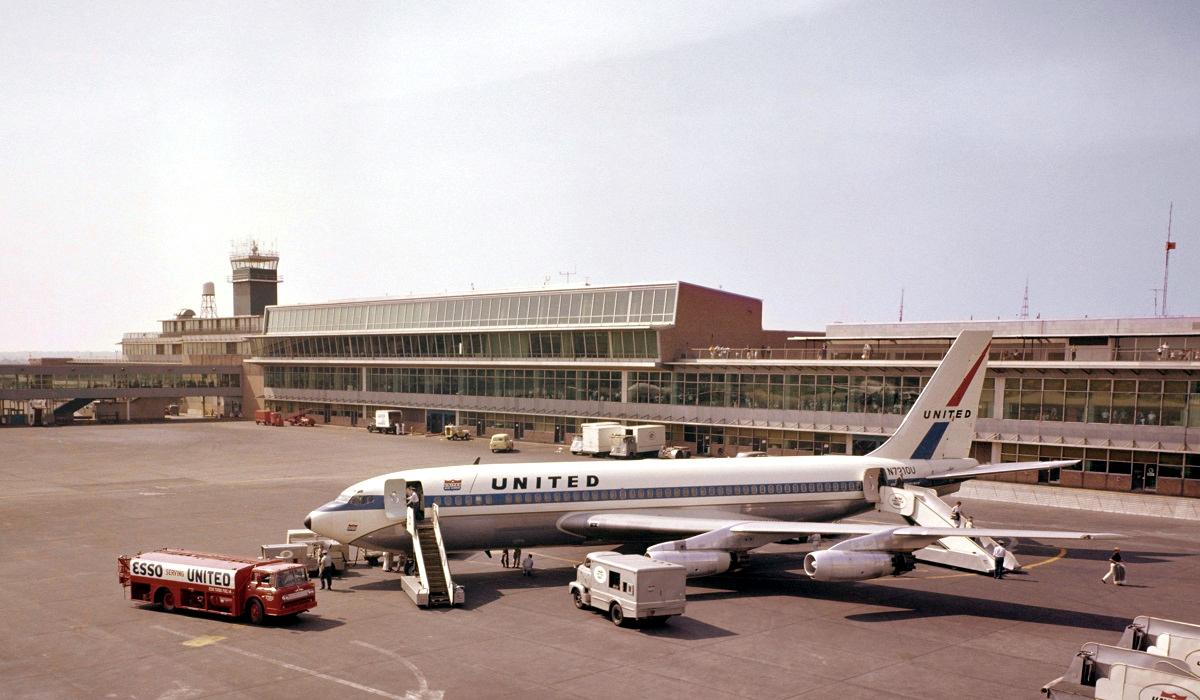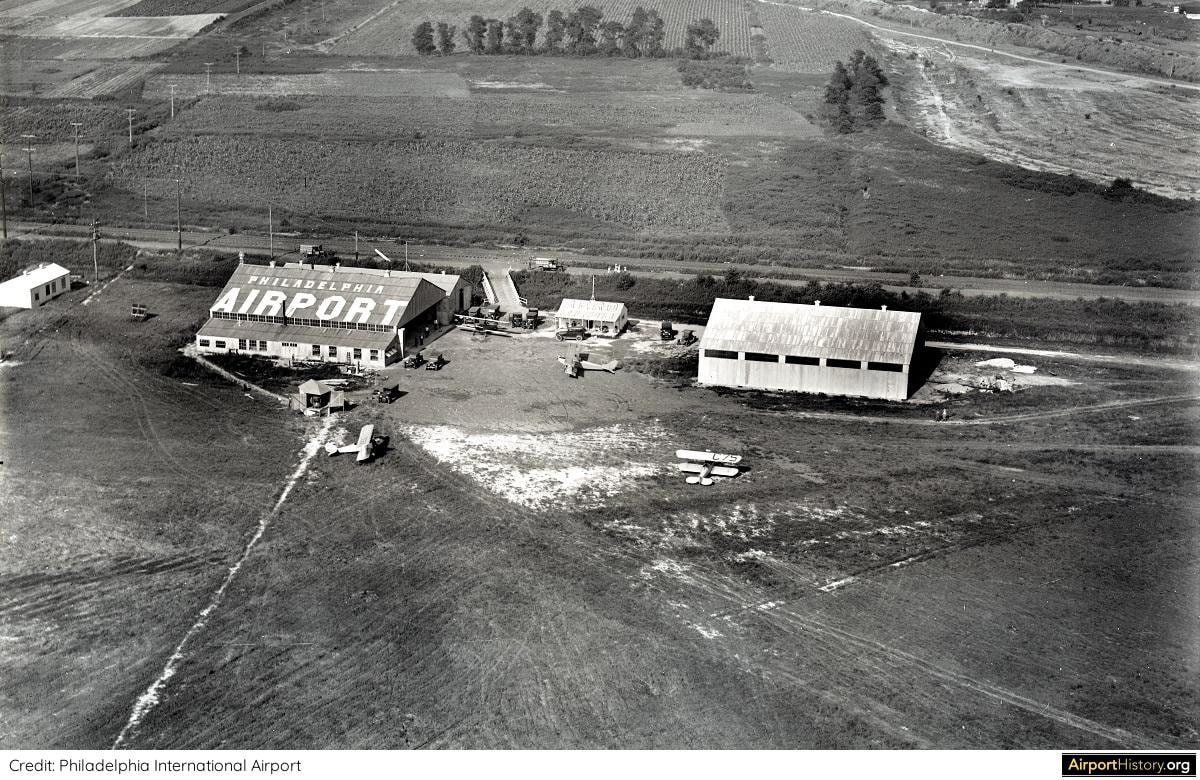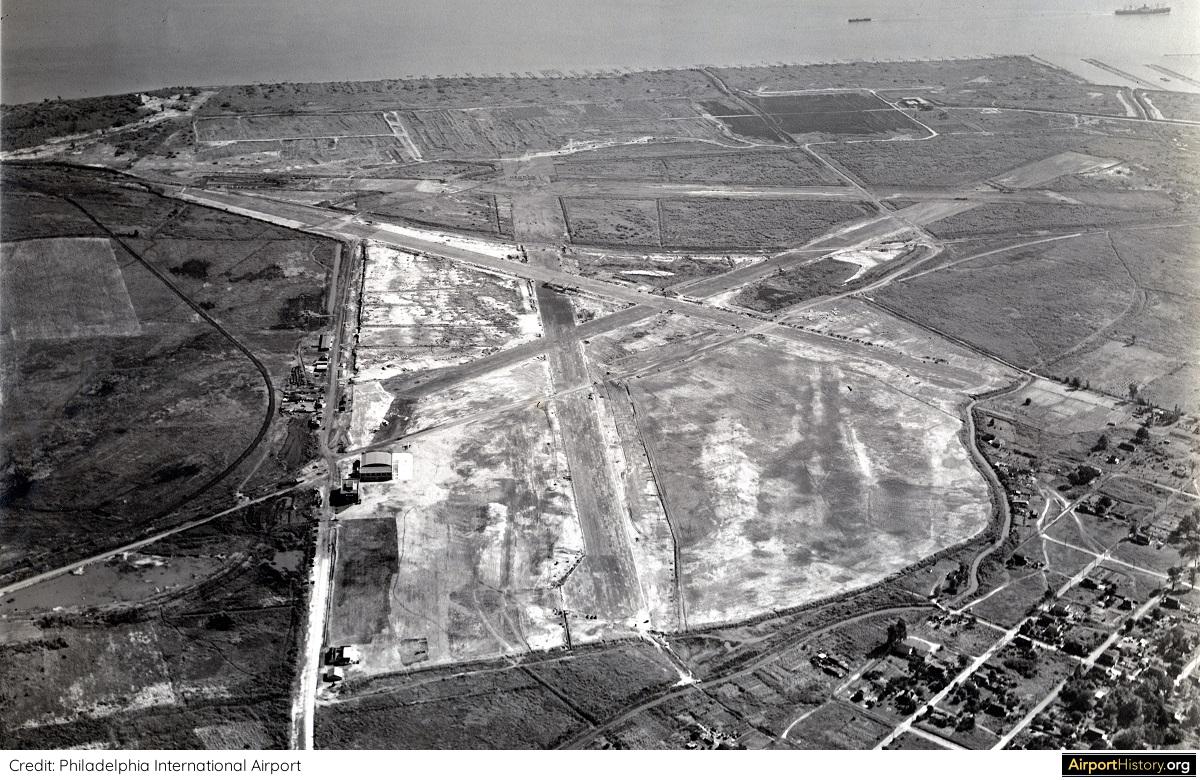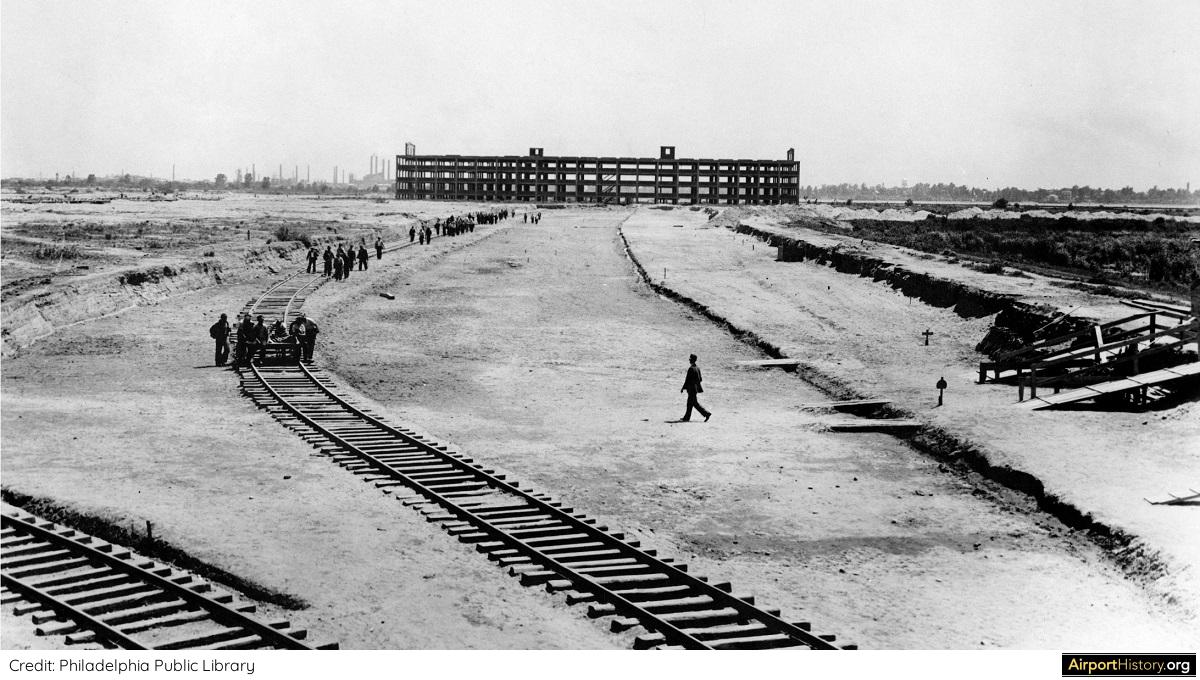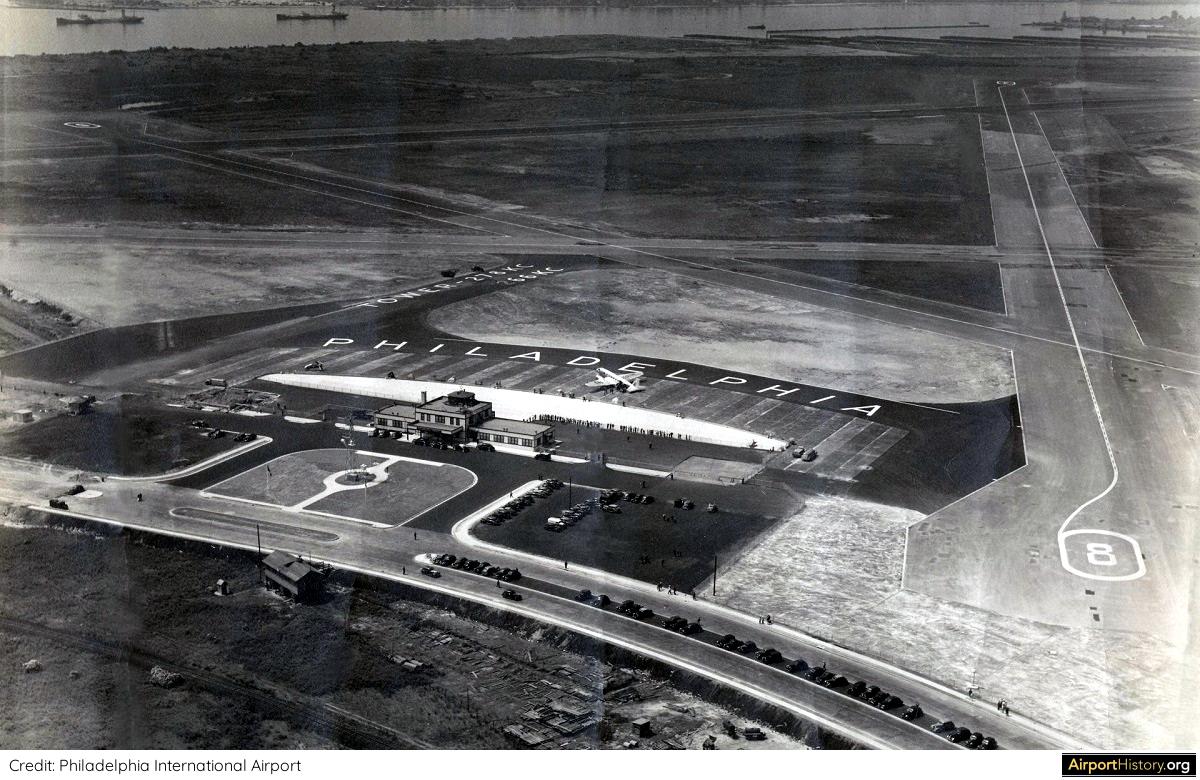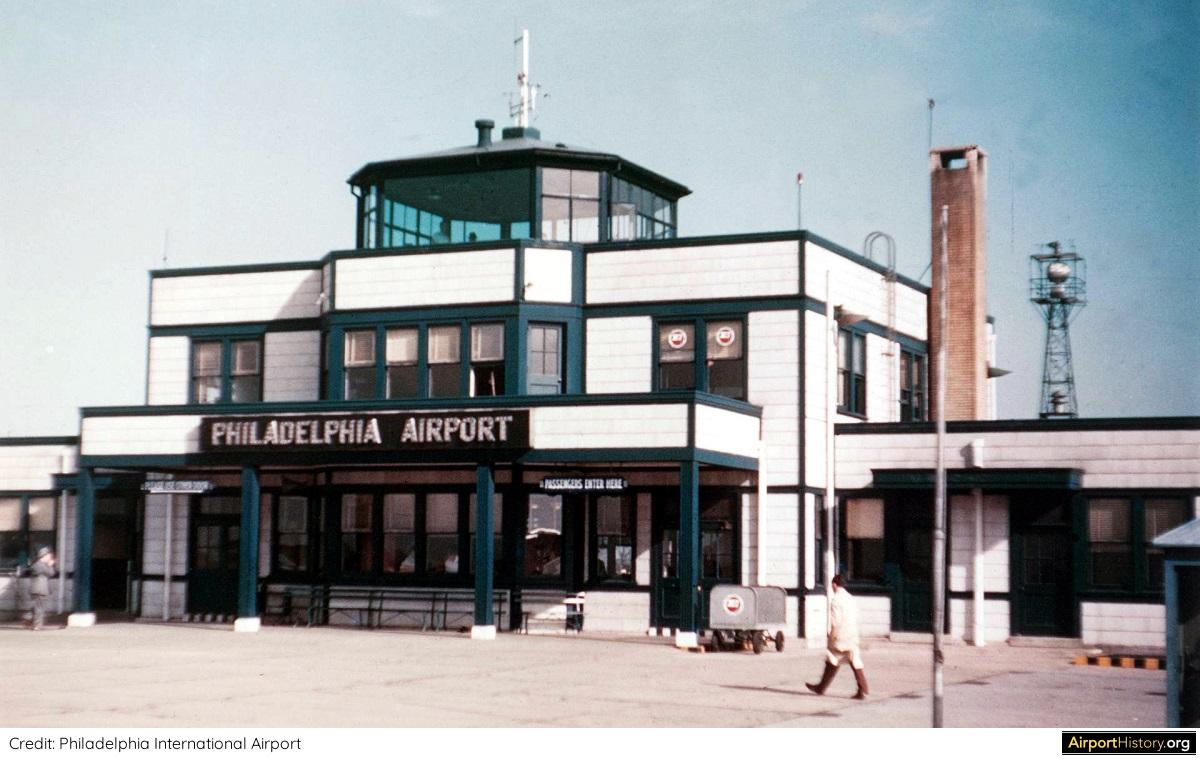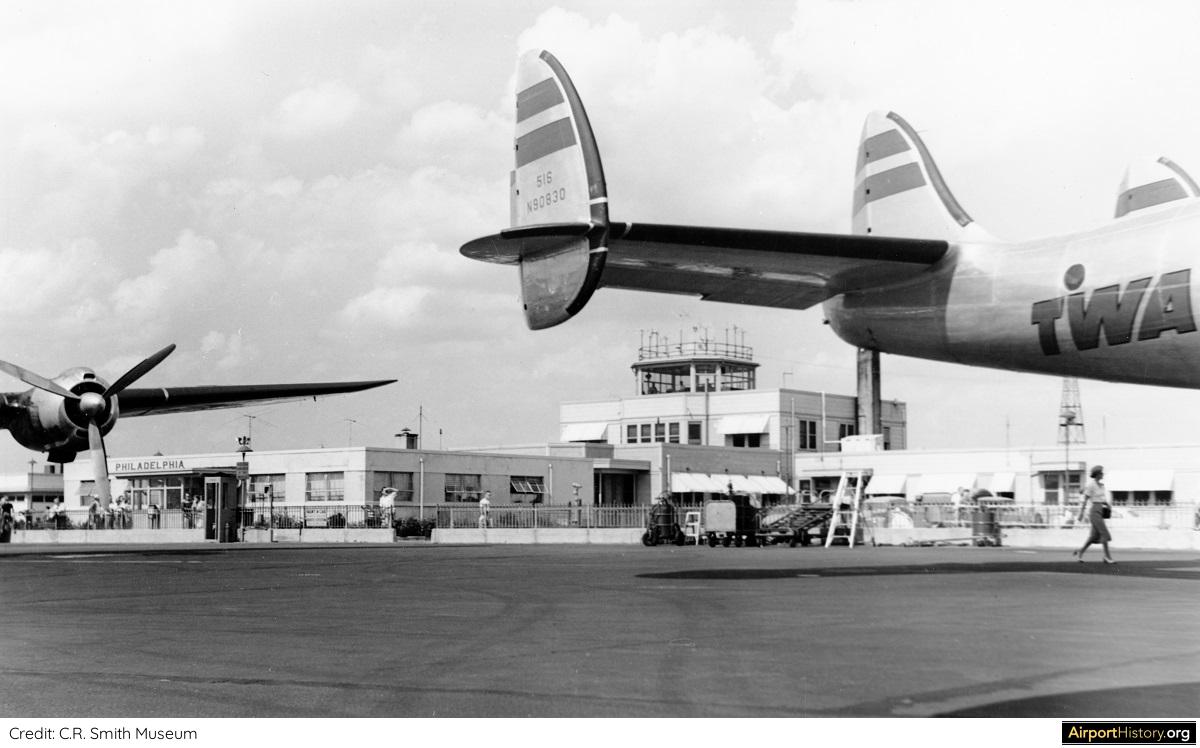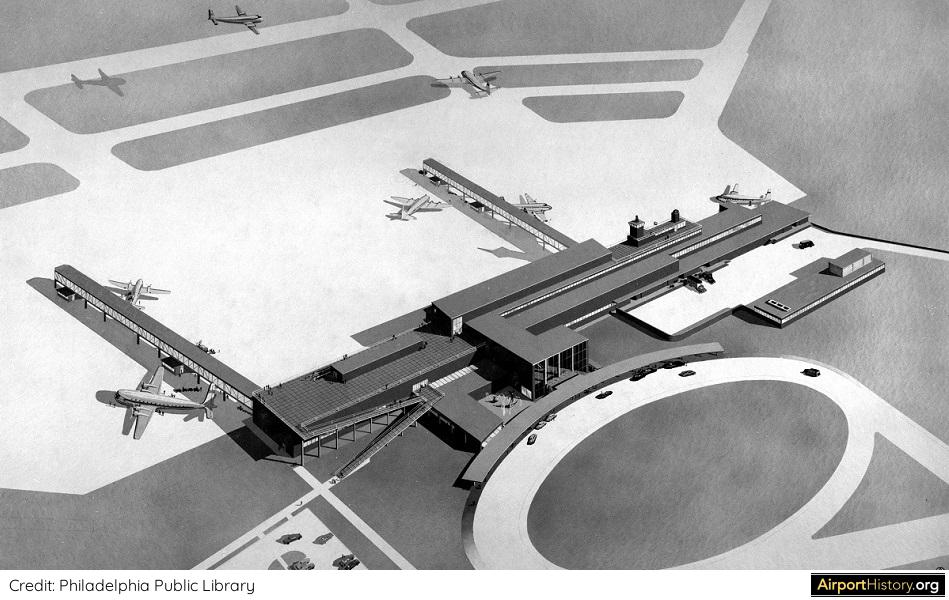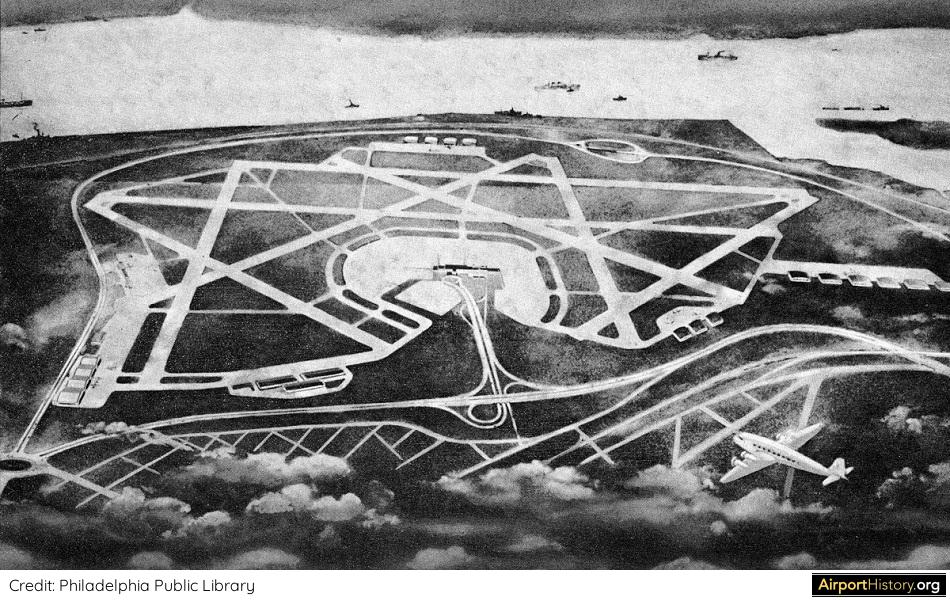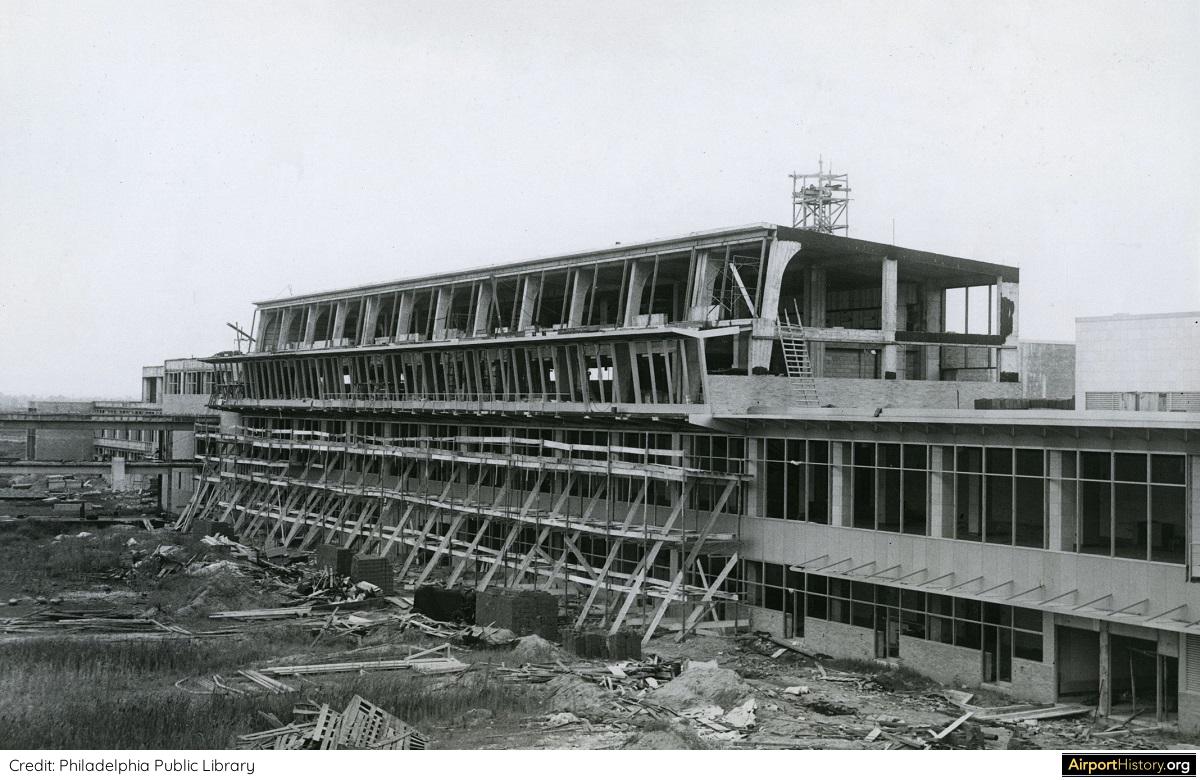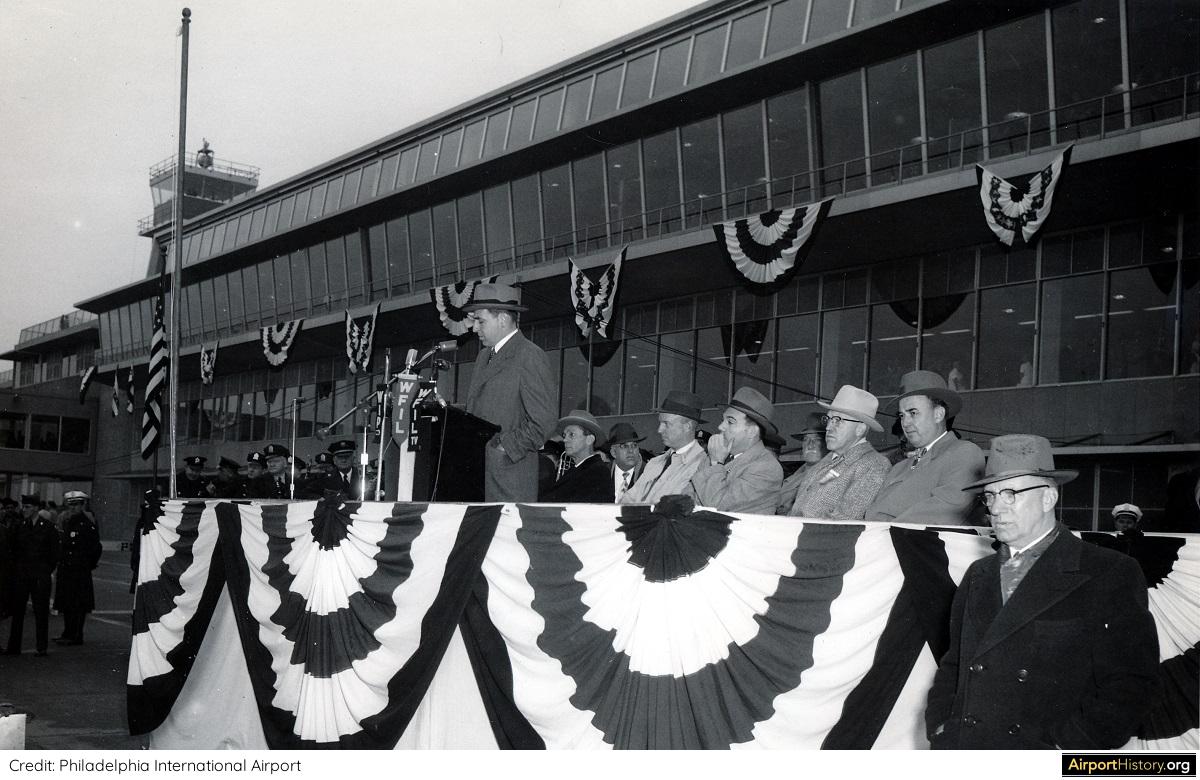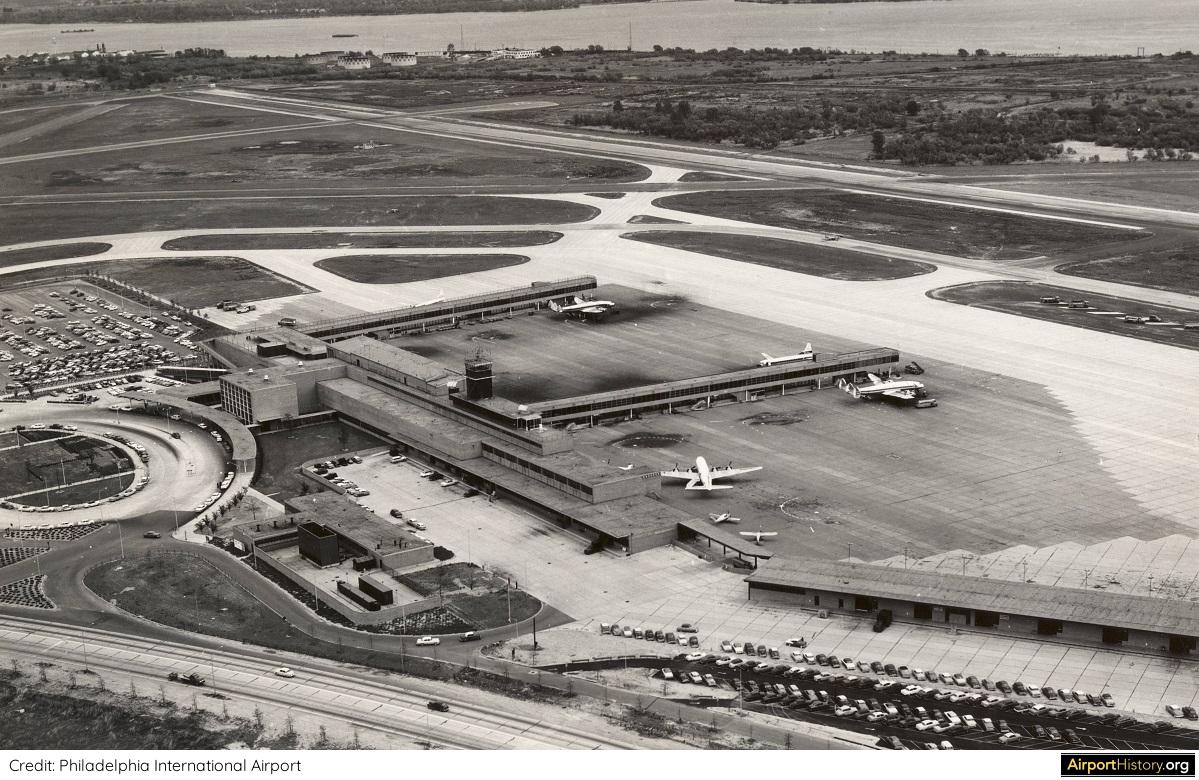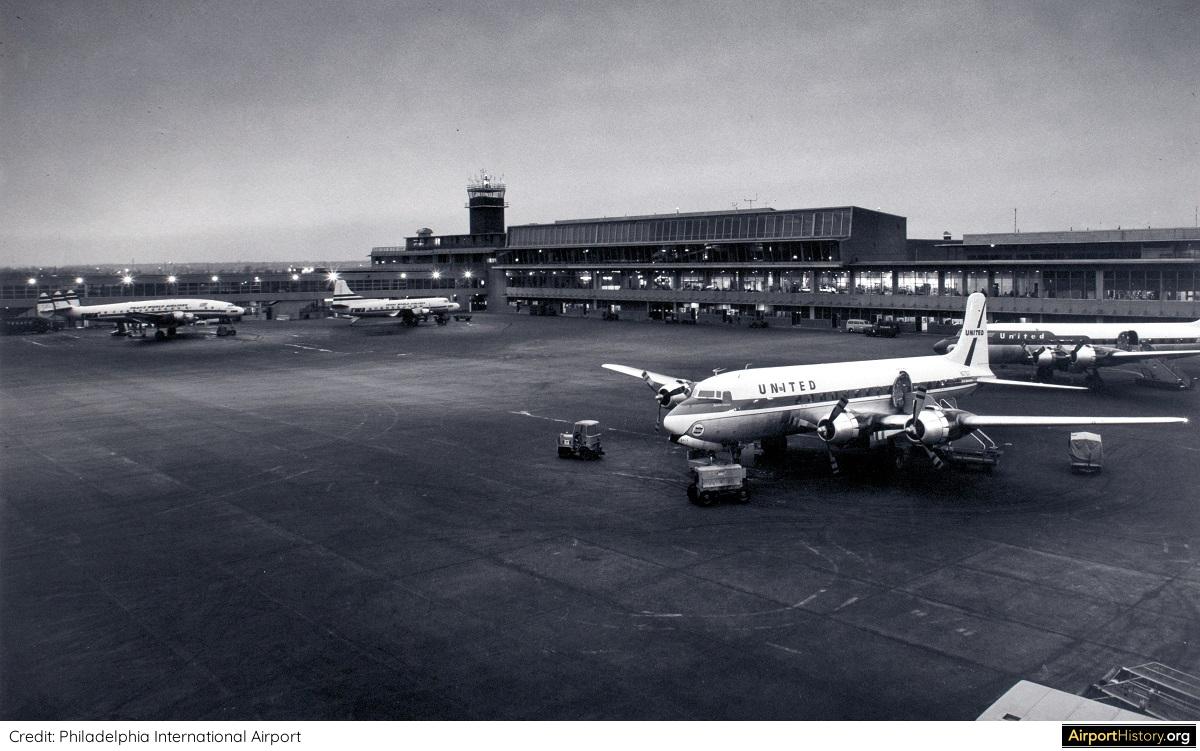Published: June 20, 2020
Introduction
On June 20th, 2020, it will be exactly 80 ago years since Philadelphia International Airport was dedicated. These days, there's not much to celebrate during these extremely challenging times for aviation. However, we did not want to pass the chance to reflect on this magnificent airport's great history.
Therefore, we have prepared an extended photo feature with a selection of photos chronicling "PHL's" evolution over the past 80 years, with a special focus on the passenger terminal facilities. We will begin by exploring the airport's development until the early 1950s, and then head into the Jet Age in part 2.
I would like to thank Heather Redfern, Public Affairs Manager, and David Rosenblum, photographer at Philadelphia International Airport, for their kind assistance in the preparation of this article. I also want to thank Shea Oakley, aviation historian, for his help.
Therefore, we have prepared an extended photo feature with a selection of photos chronicling "PHL's" evolution over the past 80 years, with a special focus on the passenger terminal facilities. We will begin by exploring the airport's development until the early 1950s, and then head into the Jet Age in part 2.
I would like to thank Heather Redfern, Public Affairs Manager, and David Rosenblum, photographer at Philadelphia International Airport, for their kind assistance in the preparation of this article. I also want to thank Shea Oakley, aviation historian, for his help.
The early years
BEFORE PHILADELPHIA INTERNATIONAL AIRPORT
The City of Philadelphia officially entered the field of air transportation in 1925 when it provided 125 acres of land for training aviators of the Pennsylvania National Guard, 6 miles (11 kilometers) southwest of the city, and not far from the Delaware River.
In 1926, the City executed an agreement with Ludington Exhibition Company, the forerunner of Eastern Airlines, to operate the facility as the "Municipal Aviation Landing Field".
October 22, 1927 was an historic day for Philadelphia and its airport as the Spirit of Saint Louis, piloted by Charles Lindbergh , touched down at Philadelphia Airport. The arrival in Philadelphia occurred during a tour of the United States following Lindbergh's historic solo flight from New York to Paris. During his visit, Lindbergh ceremoniously raised the American flag to dedicate what was then called Philadelphia Municipal Aviation Landing Field.
The City of Philadelphia officially entered the field of air transportation in 1925 when it provided 125 acres of land for training aviators of the Pennsylvania National Guard, 6 miles (11 kilometers) southwest of the city, and not far from the Delaware River.
In 1926, the City executed an agreement with Ludington Exhibition Company, the forerunner of Eastern Airlines, to operate the facility as the "Municipal Aviation Landing Field".
October 22, 1927 was an historic day for Philadelphia and its airport as the Spirit of Saint Louis, piloted by Charles Lindbergh , touched down at Philadelphia Airport. The arrival in Philadelphia occurred during a tour of the United States following Lindbergh's historic solo flight from New York to Paris. During his visit, Lindbergh ceremoniously raised the American flag to dedicate what was then called Philadelphia Municipal Aviation Landing Field.
CONSTRUCTION AND OPENING
In the early 1920s, an adjoining shipbuilding yard on the Delaware River called Hog Island, had become derelict. In 1930, the City purchased Hog Island from the United States Shipping Board for USD 3 million to provide for the expansion of the airport.
However, because of the Great Depression, the airport project lay dormant until 1936. Actual construction of a terminal building and landing field began in 1937, and the airport was formally opened as "Philadelphia Municipal Airport" on June 20, 1940.
Until that time, the four major airlines then serving Philadelphia--American, Eastern, TWA, and United--did so through Central Airport in nearby Camden, NJ, located on the opposite side of the Delaware River. After opening of the Municipal Airport they terminated their operations at Central Airport and transferred their operations to the newly opened airport.
Approximately 40,000 passengers were transported in the airport's first year of operation. The airlines primarily flew two-motor Douglas DC-3 passenger planes, which included sleepers.
In the early 1920s, an adjoining shipbuilding yard on the Delaware River called Hog Island, had become derelict. In 1930, the City purchased Hog Island from the United States Shipping Board for USD 3 million to provide for the expansion of the airport.
However, because of the Great Depression, the airport project lay dormant until 1936. Actual construction of a terminal building and landing field began in 1937, and the airport was formally opened as "Philadelphia Municipal Airport" on June 20, 1940.
Until that time, the four major airlines then serving Philadelphia--American, Eastern, TWA, and United--did so through Central Airport in nearby Camden, NJ, located on the opposite side of the Delaware River. After opening of the Municipal Airport they terminated their operations at Central Airport and transferred their operations to the newly opened airport.
Approximately 40,000 passengers were transported in the airport's first year of operation. The airlines primarily flew two-motor Douglas DC-3 passenger planes, which included sleepers.
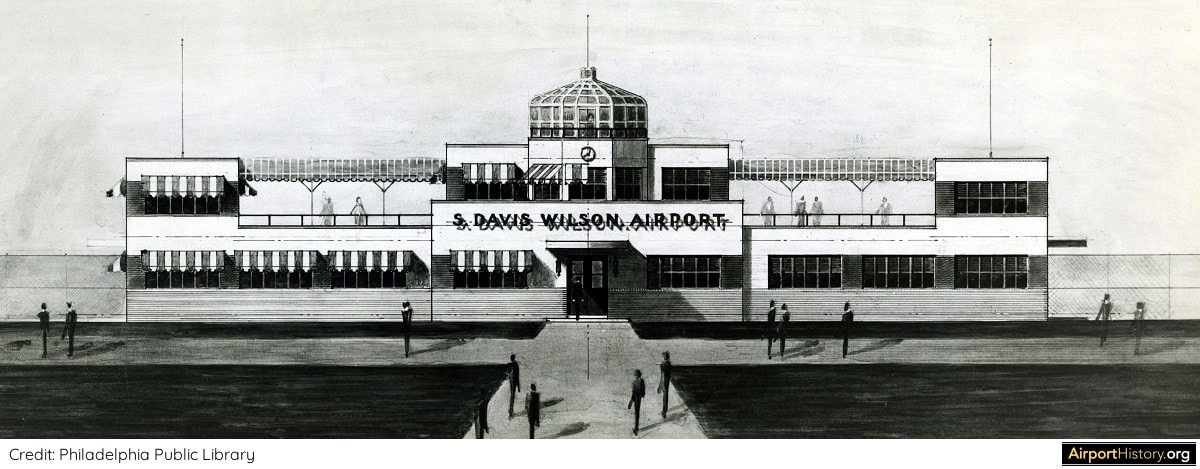
An artist's rendition of the proposed terminal. Significant changes were made to the design later on. Mayor S. David Wilson, the 86th Mayor of Philadelphia, decided that the airport should be named after him, and in 1936, the name was changed from Municipal Airport to S. David Wilson Airport. After he died in 1939, the name was changed back to Municipal Airport.
WORLD WAR II CLOSURE
Things came to a halt on December 23rd, 1943 when the Federal Government ordered the airport's closure for security purposes during World War II, rendering America's then-third largest city without a civil airport.
The first civilian airport to open in Philadelphia after the war was the new Philadelphia Northeast Airport, a redeveloped wartime facility, which was dedicated on July 1st, 1945.
REOPENING AND INTERNATIONAL STATUS
Only a few days later, the wartime ban on the use of what was now called Philadelphia Southwest Airport was lifted and the airport reopened for business a few months later on October 20th. Then-Mayor Bernard Samuel had the intention to develop both airports, arguing that each had its own unique advantages.
The airlines, however, preferred Southwest and by December, all five major airlines had transferred their operations there. A USD 2.5 million airport improvement plan was launched to bring the airport up to modern specifications, such as improved runways and expansion of the terminal building which included customs facilities and shops.
On Friday, November 23, 1945, American Overseas Airlines inaugurated weekly transatlantic service to London (Hurn Airport) via Gander and Shannon. The City appropriately renamed the Southwest Airport, "Philadelphia International Airport".
Things came to a halt on December 23rd, 1943 when the Federal Government ordered the airport's closure for security purposes during World War II, rendering America's then-third largest city without a civil airport.
The first civilian airport to open in Philadelphia after the war was the new Philadelphia Northeast Airport, a redeveloped wartime facility, which was dedicated on July 1st, 1945.
REOPENING AND INTERNATIONAL STATUS
Only a few days later, the wartime ban on the use of what was now called Philadelphia Southwest Airport was lifted and the airport reopened for business a few months later on October 20th. Then-Mayor Bernard Samuel had the intention to develop both airports, arguing that each had its own unique advantages.
The airlines, however, preferred Southwest and by December, all five major airlines had transferred their operations there. A USD 2.5 million airport improvement plan was launched to bring the airport up to modern specifications, such as improved runways and expansion of the terminal building which included customs facilities and shops.
On Friday, November 23, 1945, American Overseas Airlines inaugurated weekly transatlantic service to London (Hurn Airport) via Gander and Shannon. The City appropriately renamed the Southwest Airport, "Philadelphia International Airport".
Enjoying this article?
Sign up to our e-mail newsletter to know when new content goes online!
1950s expansion
A NEW TERMINAL FOR A NEW ERA IN AVIATION
With post-war aviation booming, the then-terminal and the short runways quickly became inadequate. At the time, Philadelphia was the third most populous city in the US and the country's third largest industrial area.
In 1948, Philadelphia handled 250,000 passengers. It was forecast that by 1950, the airport would handle 400,000 passengers; 400 flights a day, with one flight taking off or landing every minute during the busiest hour. In addition, Philadelphia was the alternate for New York in case of bad weather, which could add an additional 50-100 flights a day.
In 1950 construction started on a new USD 15 million multi-level terminal building. The terminal, designed by architects Carroll, Grisdale & Van Alen, took 2.5 years to construct, was 1,100 feet (335 meters) long and was designed to handle 2 million passengers annually. The two piers or fingers loading docks were 525 feet (160 meters) long and accommodated 10 gates each. The expansion was finally dedicated on December 12, 1953.
The terminal was unique at the time as it contained many commercial facilities. This included a restaurant seating 400 guests, coffee shops, cocktail bars, snack shops, vending machines, telephone and telegraph booths, a beauty parlor, binocular machines and pinball machines. Eventually, concessions would comprise 60-70% of all airport revenues of the airport, a spectacular percentage for those days, and even nowadays a respectable figure.
With post-war aviation booming, the then-terminal and the short runways quickly became inadequate. At the time, Philadelphia was the third most populous city in the US and the country's third largest industrial area.
In 1948, Philadelphia handled 250,000 passengers. It was forecast that by 1950, the airport would handle 400,000 passengers; 400 flights a day, with one flight taking off or landing every minute during the busiest hour. In addition, Philadelphia was the alternate for New York in case of bad weather, which could add an additional 50-100 flights a day.
In 1950 construction started on a new USD 15 million multi-level terminal building. The terminal, designed by architects Carroll, Grisdale & Van Alen, took 2.5 years to construct, was 1,100 feet (335 meters) long and was designed to handle 2 million passengers annually. The two piers or fingers loading docks were 525 feet (160 meters) long and accommodated 10 gates each. The expansion was finally dedicated on December 12, 1953.
The terminal was unique at the time as it contained many commercial facilities. This included a restaurant seating 400 guests, coffee shops, cocktail bars, snack shops, vending machines, telephone and telegraph booths, a beauty parlor, binocular machines and pinball machines. Eventually, concessions would comprise 60-70% of all airport revenues of the airport, a spectacular percentage for those days, and even nowadays a respectable figure.
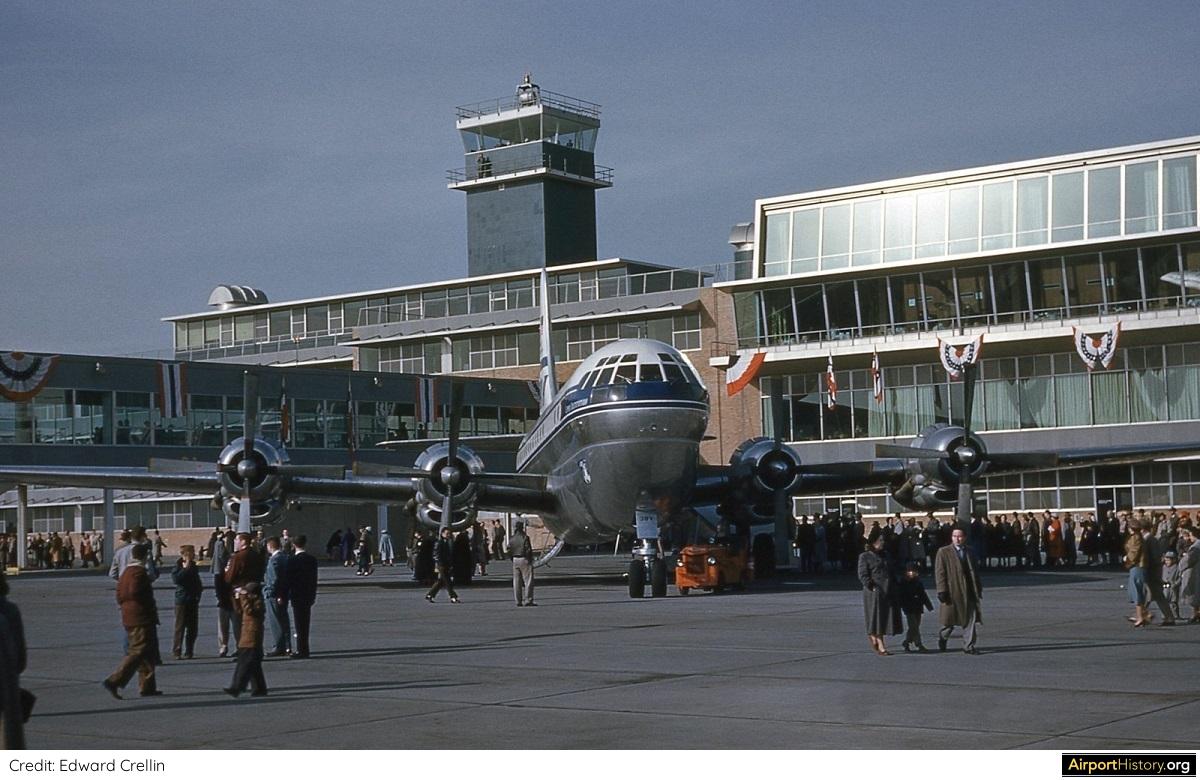
Following the opening of the new terminal on Friday, December 12th, an aviation exhibit was held as part of the 50th anniversary of powered flight by the Wright Brothers on December 17th, 1903. Thankfully, the weather had improved! The tower was put into operation later than the terminal building as the Civil Aeronautics Administration lacked funding for moving the equipment from the old to the new tower.

